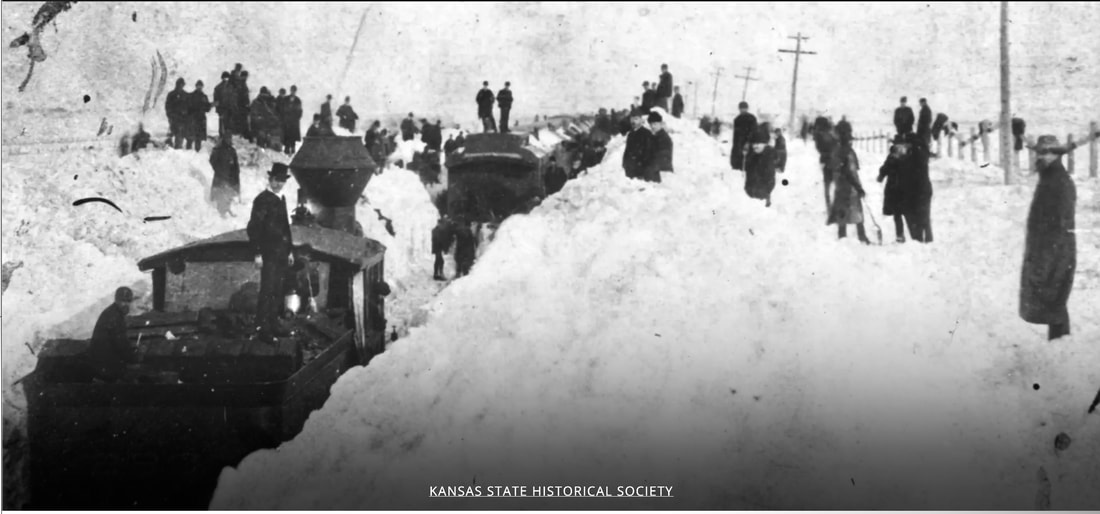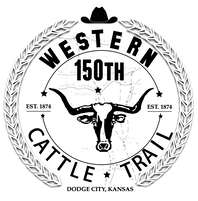 When the passengers exited the coach, they discovered they were many miles away from their actual terminus—and that they’d been riding in a coach without a driver. He was, nonetheless, sitting on top of the coach. His rigid, fixed body, that is. As the passengers had bunched for warmth inside the bumpy stagecoach, he had perished in the storm. Original Article By Lynne Hewes "It was January 1886, and the passengers had just lived through the worst blizzard Kansas had ever seen. Trains filled with hogs had frozen solid, along with their living cargo, as they sat idle, prevented from moving forward by drifting snow. People who had been outdoors on the prairie when the storm struck were found frozen, killed while searching for shelter. And then there were the cows—more than 100,000 of them, dead in the storm. All in all, the January 1886 blizzard killed at least 100 people and wiped out about 75 percent of the state’s livestock." When an enormous cold weather disaster hit the Midwest in l886, the cattle industry was already experiencing difficulties. Pastures had been overgrazed, beef prices had fallen, and farmers had begun fencing off some of the open range areas. To add to those problems came the Blizzard of l887. Although there has been snowfall during the fall of l886, what came in January of l887 was the ultimate disaster. PBS created a special about The Blizzard of l887 as part of their New Perspectives on the West Series. According to the series, cattlemen called the blizzard “the Great Die-up.” When temperatures dropped so rapidly that January and the blizzard brought high winds, “some cattle were actually blown over; others died frozen to the ground.” Cowboy Teddy Blue Abbot reminisced about his experience during that blizzard, saying, “It was all so slow, plunging after them through the deep snow that way..... The horses' feet were cut and bleeding from the heavy crust, and the cattle had the hair and hide wore off their legs to the knees and hocks. It was surely hell to see big four-year- old steers just able to stagger along.” Another cowboy, Lincoln Lang, recalled what he saw after the blizzard passed: “...countless carcasses of cattle going down [the river] with the ice, rolling over and over as they went, sometimes with four stiffened legs pointing skyward.” The blizzard and its destruction was the final straw that dampened hopes of many who had aspired to make their fortunes in the cattle business. Mother Nature had proven that her powers were far greater than those of mankind. Source: Photo Reference: The Monster Blizzard That Turned Kansas Into a Frozen Wasteland “Hell without Heat.” New Perspectives on the West, Episode 7. PBS. Public Broadcasting Service, Web. 19 Jan. 2019. IN A BLIZZARD, PAINTED BY FRANK FELLER, CIRCA 1900. DURING THE GREAT DIE-UP, THOUSANDS OF DEAD CATTLE CLOGGED RIVERS, PILED UP AGAINST FENCES, AND FILLED COULEES, AND THE STINK OF DEATH HUNG OVER THE REGION FOR MONTHS. MANY COWBOYS, IN VAIN ATTEMPTS TO SA
0 Comments
Leave a Reply. |
Author"THE MISSION OF THE WESTERN CATTLE TRAIL ASSOCIATION IS TO PROTECT AND PRESERVE THE WESTERN CATTLE TRAIL AND TO ACCURATELY PROMOTE AWARENESS OF IT'S HISTORICAL LEGACY." Archives
July 2024
Categories |

 RSS Feed
RSS Feed

